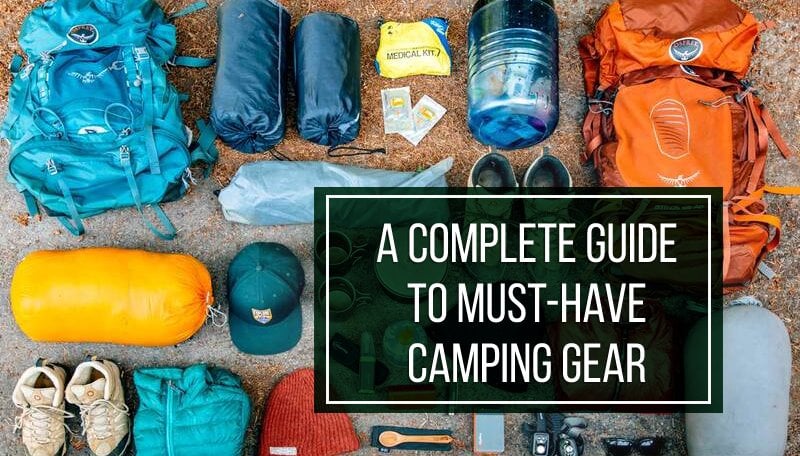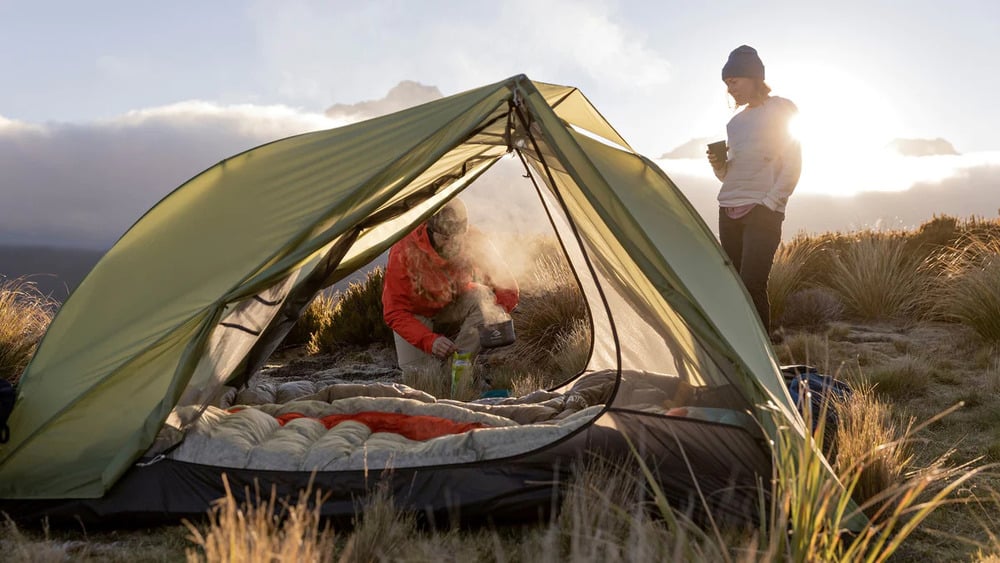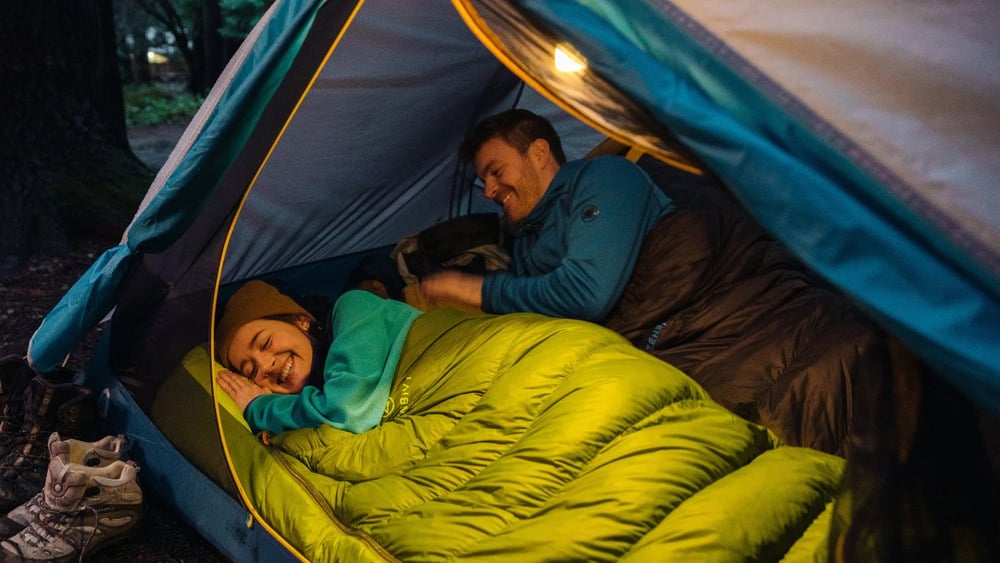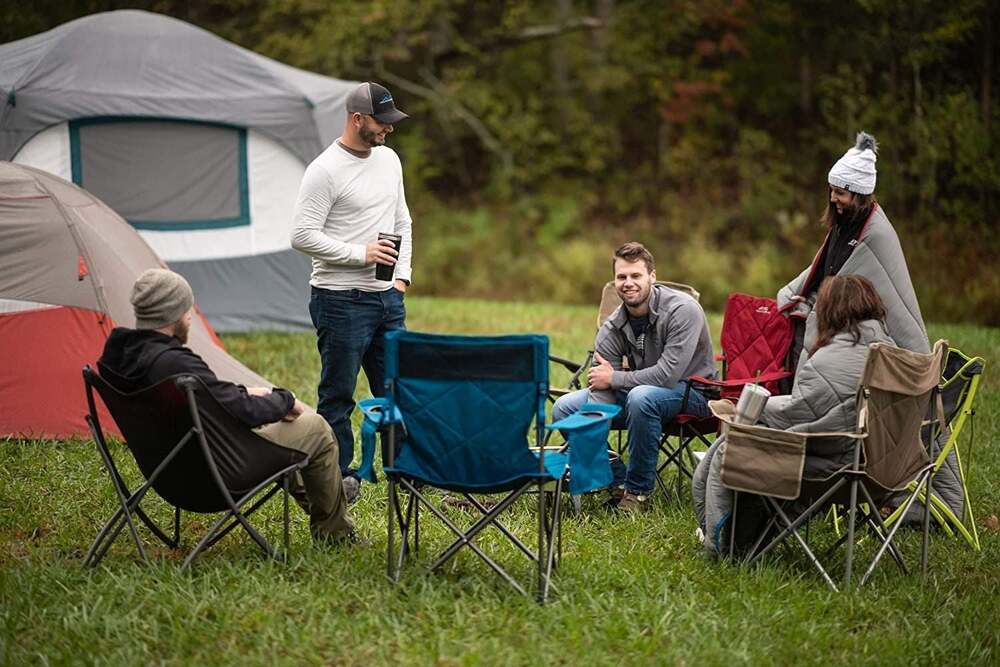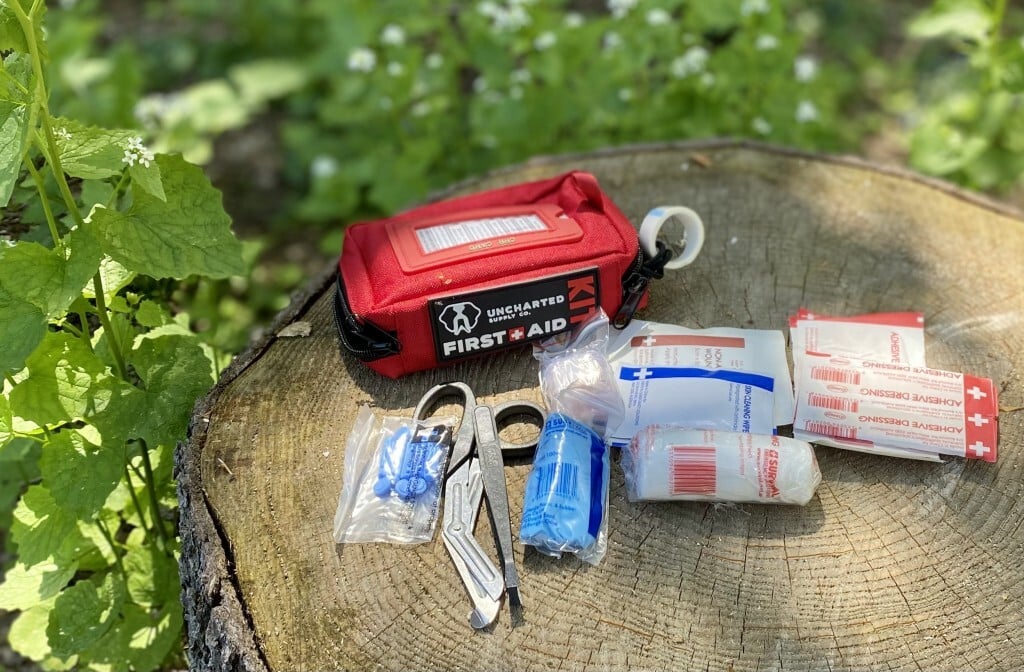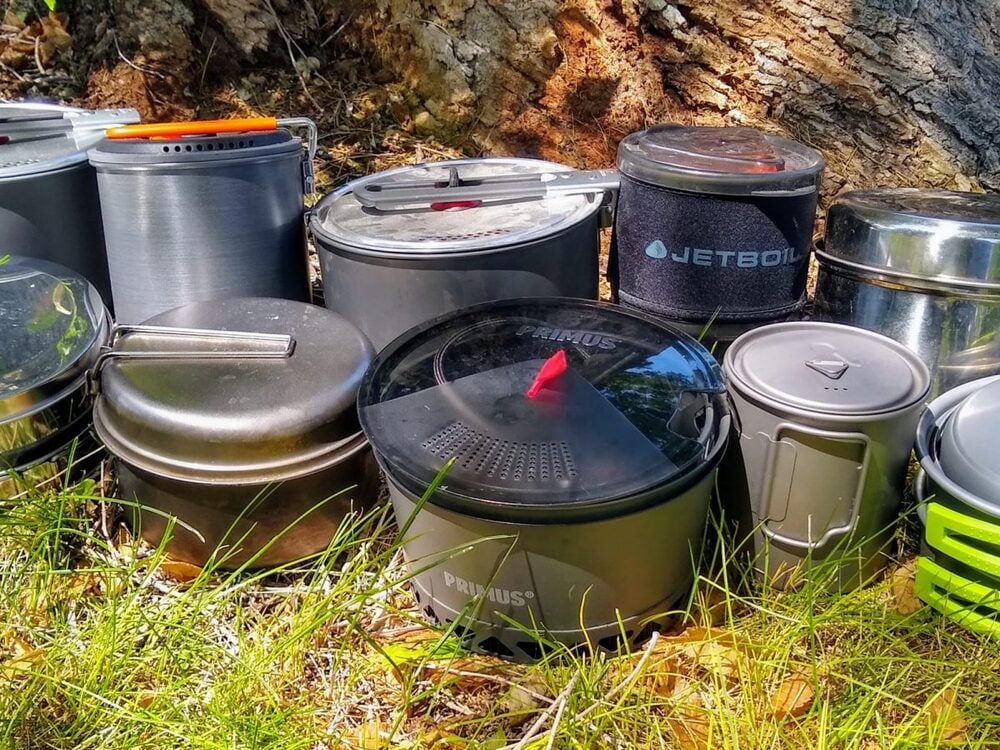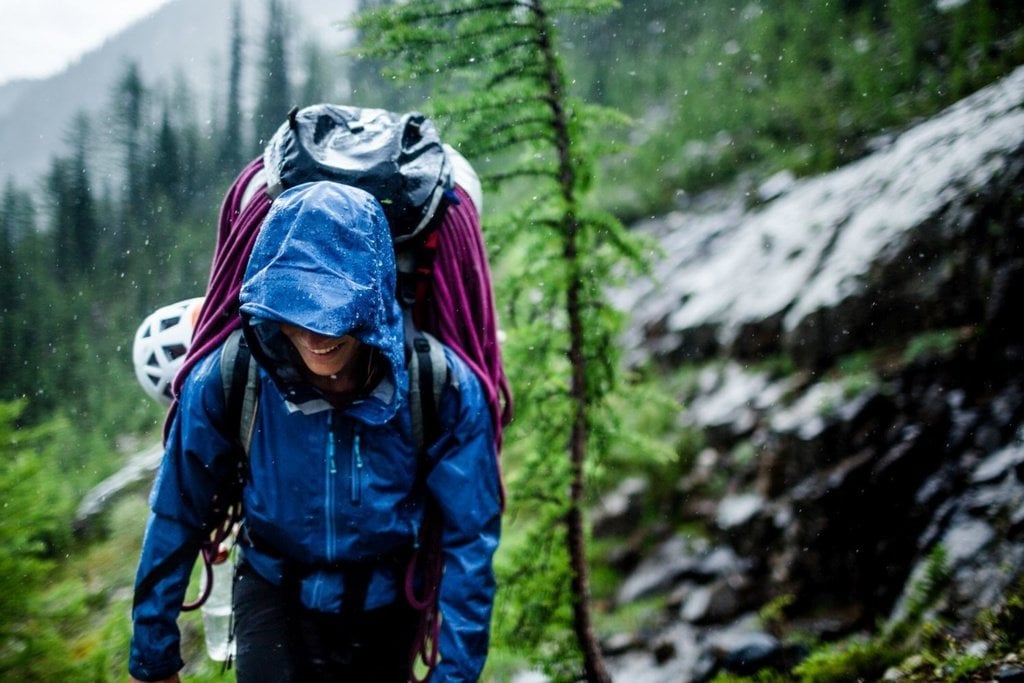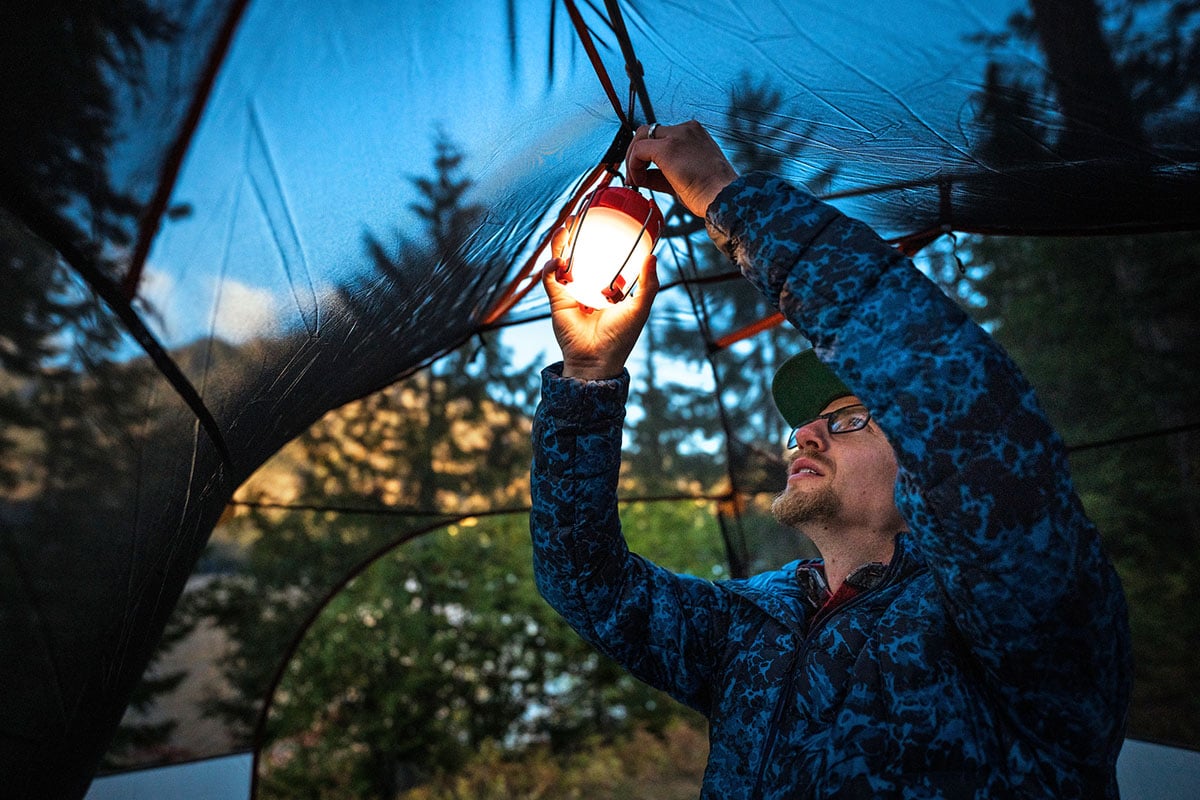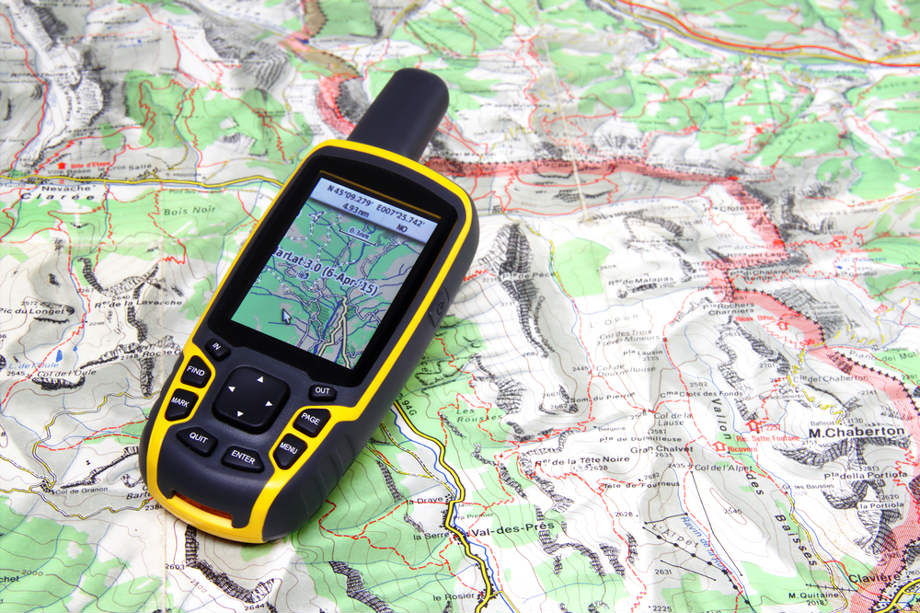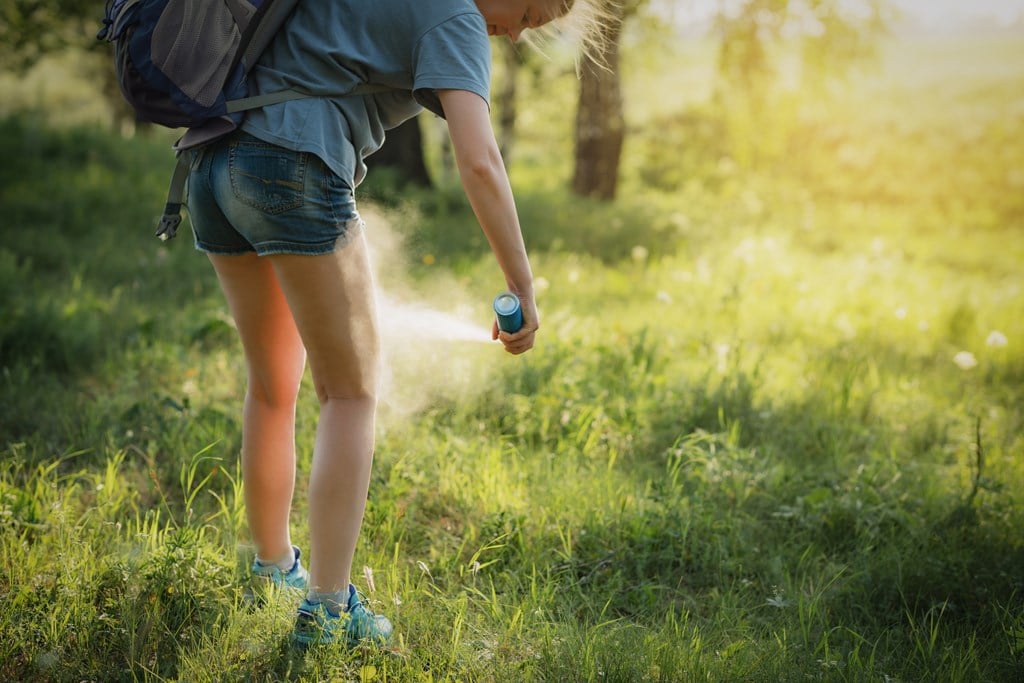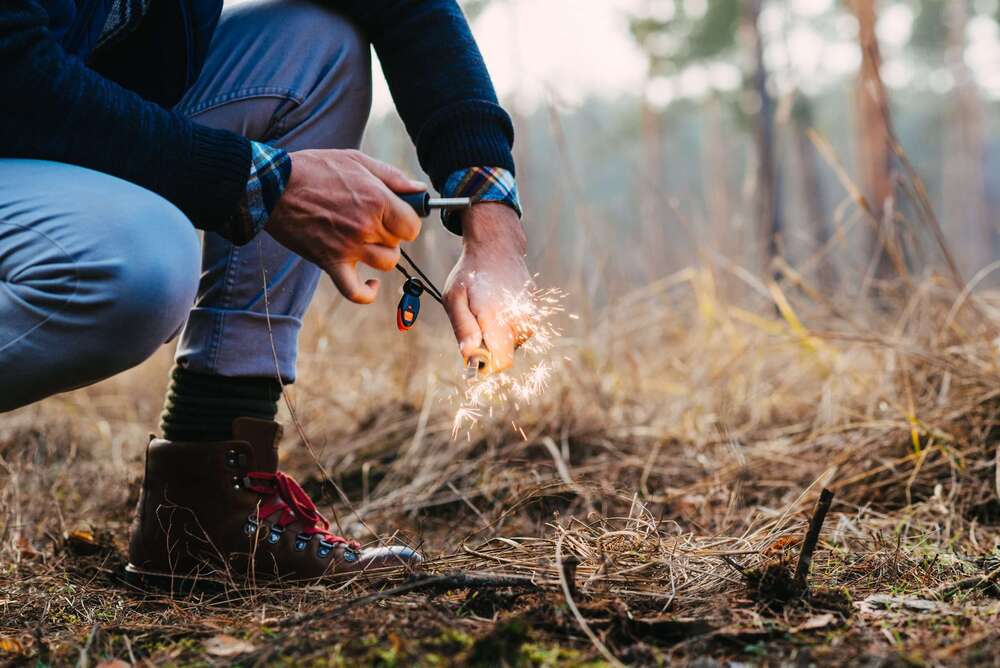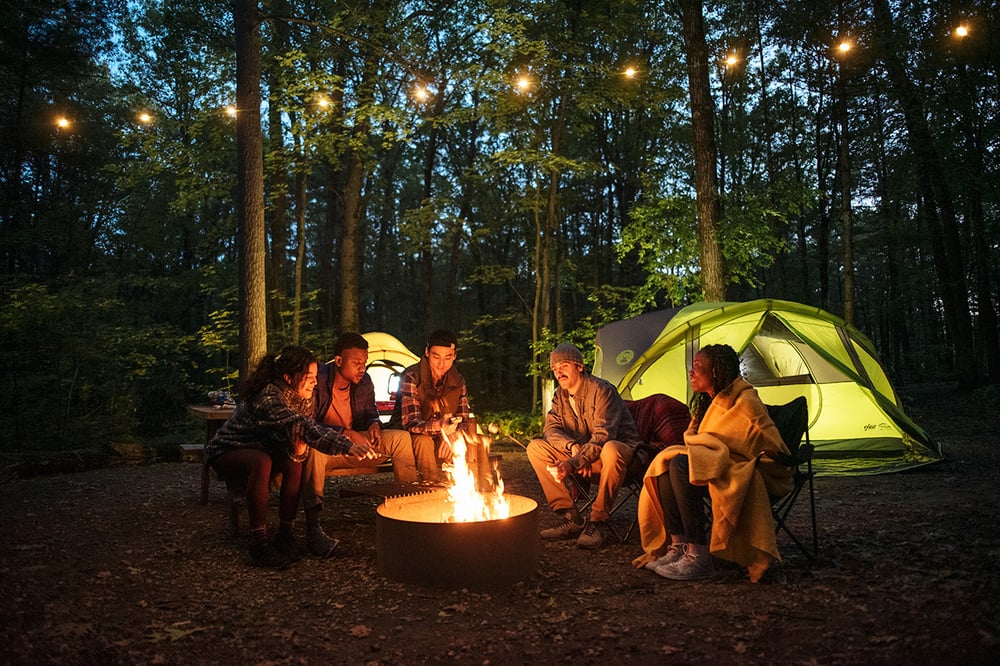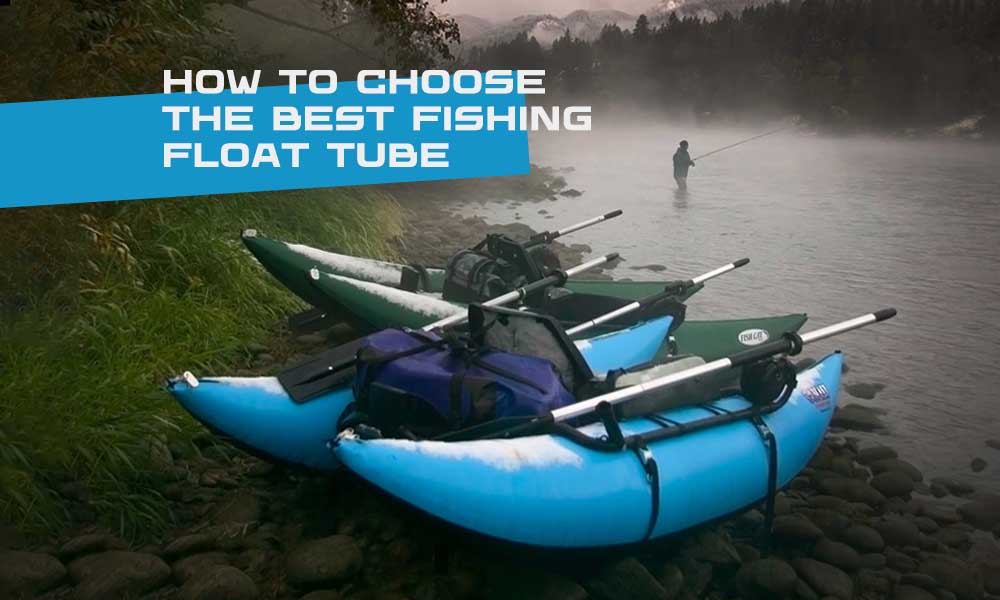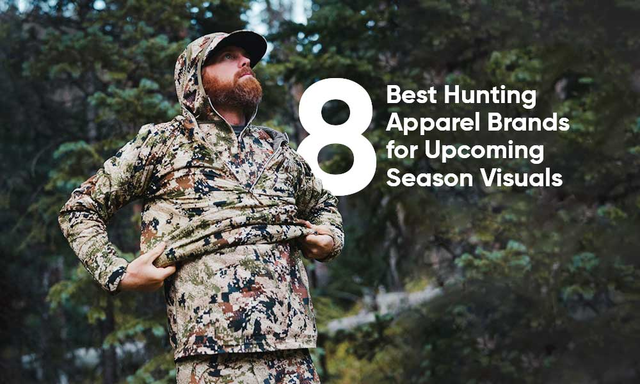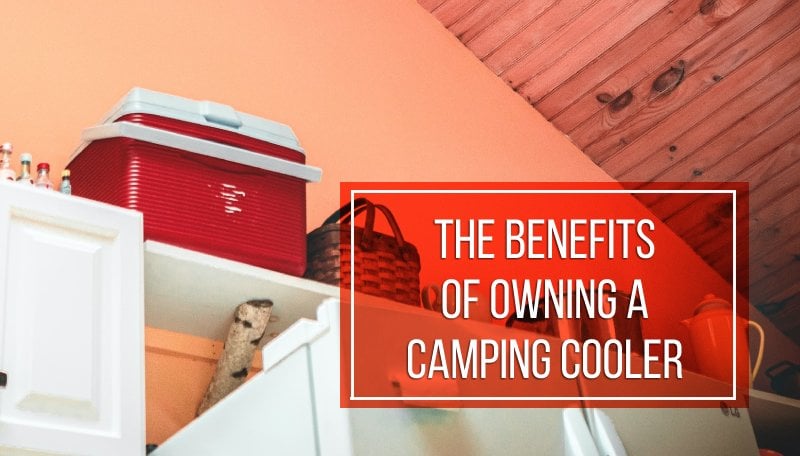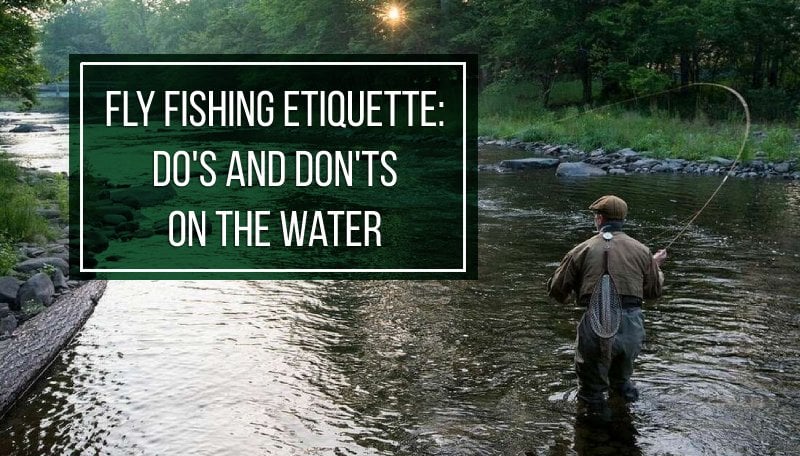Last Updated on
Camping is one of the best ways to spend time outdoors. To run away from the bustle of everyday life and reestablish our dwindling connection to nature. However, for a camping trip to be successful or at least not end up being an utter fiasco, you need to have the right equipment. Many people have the urge to pack as many things as possible. After all, you never know what nature will throw at you, and there is no such thing as being overprepared. Unfortunately, the amount of equipment you can bring is limited by the capacity of your backpack and the weight you can effectively carry. That’s why it’s important to identify must-have camping gear. Here’s the list of items that should definitely make it into your backpack, or hang somewhere on it.
Table of Contents
Camping Tents
Sleeping Bags
Camping Chairs
Fist Aid Kits
Cookware and Utensils
Clothing and Footwear
Lighting and Illumination
Navigation Tools
Protective and Repelling Substances
Fire Starting Equipment
Conclusion
FAQs
Camping Tent
A tent is the most iconic piece when it comes to camping gear. It is your primary shelter from two-faced nature, sometimes merciful, sometimes unforgiving. The latter trait makes it particularly important to choose a tent that will provide you with the comfort and protection you might need. When choosing one, several characteristics should be taken into account, such as capacity, materials, ease of setup, weight, ventilation, and flooring.
Capacity is an important factor when it comes to choosing a tent. You want to make sure that your tent can accommodate all of your camping companions comfortably. By comfortably we mean not packed like sardines, and that means you need to take one step further and stop relying on manufacturer specifications. As a rule, a four-person tent can comfortably fit half as many people together with their gear, or three adventures with a smaller part of their equipment. Four people would hardly squeeze into it having to leave their camping gear somewhere else, so don’t be fooled by any of those numbers. If there are four of you planning to sleep in one tent, you need to get a six-person tent. It doesn’t necessarily mean you always need to aim for the largest capacities. Just be mindful of a tent’s housing capabilities.
The materials used in the construction of a tent are also very important. You want to make sure that your tent is made from durable material that can withstand harsh weather conditions and keep you warm and dry during your camping trip. Canvas tents are known for their longevity and waterproofness, but they become much heavier once they absorb enough water and are not the quickest to dry. Nylon and polyester tents too boast waterproof qualities but deteriorate faster than canvas ones.
Ease of setup is another key factor when selecting a tent. You don’t want to spend hours struggling with poles and stakes just trying to get your tent set up in time for nightfall. If you are not particularly confident in your tent-setting skills, look for tents that have easy-to-follow instructions.
Weight is also an important consideration when selecting a camping tent. If you’re planning on backpacking or hiking long distances with your gear, then you’ll want to look for lightweight tents that won’t weigh you down too much but still provide adequate protection from the elements.
Ventilation is another essential feature of any good camping tent. Poor ventilation can lead to condensation buildup and waking up in a damp tent is an experience of rare unpleasantness. Look for tents with plenty of mesh panels or windows so air can circulate freely throughout the interior space while keeping bugs out at night.
Finally, an aspect often overlooked, the flooring. Make sure that the flooring material used in your chosen model is waterproof and durable enough to protect against water seeping through from below or rain dripping down. It’s also recommended to use a footprint, a piece of fabric that goes under your tent to protect it from the ground.
Sleeping Bags
While it’s technically possible to sleep without any specialized camping gear, your night will definitely be more restful with a sleeping bag. Besides, nights in the forest can get pretty chilly, and sleeping bags excellently address this issue.
When it comes to choosing a sleeping bag, there are several factors to consider. Temperature rating is one of the most important factors, as it will determine how warm you stay in your sleeping bag. For summer camping trips, look for a sleeping bag with a temperature rating of at least 35°F and higher. The three-season bags, fit for the spring-fall period, go somewhere around 15-30°F. If you plan to camp in colder weather, you’d want a sleeping bag with a temperature rating of 0°F or lower. A 20°F bag is the most universal choice that will likely get you through the whole year.
Another factor to consider when choosing a sleeping bag is the fill type. Down fill offers superior warmth and compressibility but can be expensive and loses its insulating properties when wet. Synthetic fill is more affordable and retains its insulating properties when wet but may not be as lightweight or compressible as down fill. Ultimately, the best choice depends on your needs and budget.
If we talk about comfort, there are a variety of shapes and sizes of bags to choose from. Rectangular bags are the most common and provide plenty of room for both legs and arms to stretch out. Double bags are great for couples who want to sleep together in one bag, while mummy bags offer a snug fit that tapers toward the feet, making them the warmest but not always the most comfortable option. Quilts are also popular among campers as they can be used as a blanket or draped over you like a traditional sleeping bag. No matter what shape you choose, make sure it fits your camping needs so you can get a good night’s rest.
Camping Chairs
Sooner or later, you’d want to take a seat. While finding a log and dragging it near a campfire does sound romantic and is definitely worth doing, having something soft to sit on has its own appeal. Folding camping chairs are lightweight and easy to transport, which makes them a must-have for any camping trip. There are many different styles of camping chairs available, yet choosing between them is usually a matter of personal preference.
When selecting a camping chair, comfort and packability should be your main priorities. Comfort is key for spending long hours outdoors, so look for a chair with good back support and cushioning. Packability is also important; look for a chair that folds up easily into a compact-sized configuration for easy transport.
Classic camp chairs are the most popular style of camping chair due to their comfort and convenience. They typically feature armrests and cup holders, making them great for relaxing around the campfire or enjoying a picnic lunch in the woods. Low-profile camping chairs are perfect for those who want something lightweight but still comfortable; they sit closer to the ground than traditional camp chairs but still offer plenty of support. Suspended camping chairs provide an elevated seating experience with a hammock-like design; they’re great for lounging in the sun or star gazing at night. Scoop camping chairs have an ergonomic design that conforms to your body shape; they’re perfect for long days spent outdoors as they provide superior comfort and support.
First Aid and Medical Supplies
When out in the wild, injuries tend to tag along. For that reason, it’s essential to be prepared for any emergency lest it should take you aback. Having a first aid kit with you is an absolute must, as help is usually long in coming into the wilderness.
There are many pre-arranged first aid kits available on the market today, but you can also assemble one on your own. Pack things like adhesive bandages of various sizes and shapes, antiseptic wipes and/or solutions, hydrogen peroxide, tweezers, scissors, gauze pads and rolls, burn ointment or cream, antihistamines for allergic reactions, pain relievers such as ibuprofen or acetaminophen and antibiotic ointment or cream for cuts and scrapes. Obviously, any medications you take regularly should be included as well.
There is one more thing to keep in mind. It would be a shame to have a first aid kit and not know how to use it. Taking a basic first-aid course can help you understand how to treat common injuries and illnesses while camping. Remember, that campers are the first-response group in such crises, and the first minutes and hours are pivotal when it comes to treatment.
Cookware and Eating Utensils
Cooking while camping is a great way to bring people together and enjoy the outdoors and the food, with two things enriching each other’s taste and appeal. Even though we retreat into nature’s embrace from cities and towns, there is no need to neglect the benefits of civilization. Food deserves to be cooked and eaten properly, and for that, you need cookware and eating utensils.
When it comes to cookware sets for camping, there are many options available. Different materials such as aluminum, stainless steel, titanium, and cast iron are used in making cookware sets for camping. Aluminum is lightweight and affordable, but its quality deteriorates when the cookware is exposed to acidic food. Stainless steel is heavier but is tougher and more resistant to scratches and abrasion. Titanium is even lighter than aluminum and more corrosion-resistant but also more expensive. Cast iron has excellent heat retention properties and can last a lifetime with proper care. However, its encumbering weight makes it a poor choice for backpacking trips.
In addition to cookware sets, you will also need eating utensils for camping such as plates, bowls, cups, spoons, forks, knives, etc. It’s important to choose utensils that are lightweight yet durable enough for outdoor use. Some utensils come with special features such as collapsible handles or nesting capabilities which make them easier to store and transport.
Clothing and Footwear
When it comes to clothing for camping, breathability and waterproofness are key qualities. They don’t need to be featured in one garment – the important thing is to have clothing that possesses those characteristics. That’s why layering is so popular with campers. Look for materials like nylon, polyester or merino wool that will keep you dry while still providing sufficient ventilation. Avoid cotton, which becomes heavy when wet and takes a long time to dry. Don’t forget to pack garments that can be easily added or removed as temperatures change throughout the day.
Footwear is also an important consideration when camping. Look for shoes with good traction, as you’ll likely be walking on uneven terrain. Waterproof boots are essential if you’re expecting rain or snow, while sandals may be more comfortable in warm weather. It might be a good idea to take two pairs of shoes: one for the road, sturdier and more robust, the other for the camp itself, lighter and more breathable. Make sure your shoes fit properly and provide adequate support for your feet; this will help prevent blisters and other injuries during long hikes or treks through rough terrain.
Lighting and Illumination
Lighting and illumination equipment are essential for any camping trip. Evenings and nights in the forest can get pretty dark, and there is no ambient light other than the moon’s (given it’s bright enough and the sky is clear). There are many different types of lanterns available, each with its own pros and cons.
Electric lanterns are the most popular choice for campers, as they provide bright, consistent light without the need for fuel or candles. They are also easy to use and maintain, making them an ideal choice for those who don’t want to fuss over their lighting equipment. However, electric lanterns require batteries or some other form of power source, so it’s important to make sure you have enough on hand for your trip.
Fuel-burning lanterns are another option for campers looking for a reliable light source. These lanterns burn either kerosene or propane gas, providing bright light without the need for batteries or electricity. They are also relatively inexpensive and easy to use, but they do require regular maintenance and refilling of fuel tanks.
Finally, candle lanterns offer a more traditional approach to lighting up your campsite. Candles provide soft, ambient light that can be used both indoors and outdoors. They are also relatively inexpensive and easy to find in stores or online. The major downside is that they can be dangerous if not handled properly; an additional source of fire is an additional source of concern.
Then, there are flashlights, another camping must-have. They are more compact than lanterns, making them easier to carry and store in your backpack. Flashlights come in a variety of shapes and sizes, from all sorts of handheld models to headlamps. Several characteristics determine the performance of camping flashlights, the main ones being lumens (how bright), beam distance (how far), battery life (how long), and water resistance. You don’t need to pack a tactical flashlight if you don’t want to, a compact key-chain one should suffice.
Navigation Tools
Getting lost is a traditional plot device for horror movies and thrillers. Unless you want your camping trip to incorporate elements of those genres, knowing where you are and where you’re going is crucial. GPS and topographical maps paired with compasses are two primary means of navigation when camping.
GPS is a satellite-based navigation system that provides location information anywhere on Earth. It is incredibly accurate, allowing campers to pinpoint their exact location at any given time. GPS also allows users to save waypoints and track their progress along a route, making it easy to retrace your steps if necessary. The downside of using GPS is that it relies on satellites, so if there is no signal or the device runs out of battery, you will be as useful as a key with no lock.
Topographical maps with compasses provide an alternative means of navigation when camping. Topographical maps show elevation changes, bodies of water, roads, trails, landmarks, etc., which can help campers orient themselves in unfamiliar terrain. A compass allows campers to easily identify north/south/east/west directions even without the aid of a map or GPS device. The downside of using topographical maps with compasses is that they require more skill than GPS devices do; if not used correctly they may lead campers astray instead of helping them find their way back home safely.
The choice between the two is always up to you. If you are not confident in your map-reading skills, opt for GPS. If you assume there might be no signal, choose a physical map.
Insect Repellent, Sunscreen and Hygiene Products
In the wilderness, there are plenty of things that might spoil your leisurely trip. Flying, buzzing, stinging and biting things, or the one that can give you skin cancer. Insect repellents help keep away pesky bugs that can be a nuisance while camping. Sunscreen helps protect your skin from the sun’s harmful UV rays. And hygiene products help keep you clean and healthy while out in the wilderness, plain and easy.
When choosing an insect repellent, look for one with natural ingredients like citronella or lemon eucalyptus oil. These are effective at keeping away mosquitoes, ticks and other insects without being too harsh on your skin. There are also more conventional sprays with DEET as an active agent. They are usually more effective, but have a very specific smell and are not good for your skiing. Remember to read the label carefully to make sure it is safe for use on children and pets.
When choosing a sunscreen, look for one with an SPF rating of at least 30 or higher. This will provide adequate protection against UV rays without having to apply too much product. Also, look for waterproof formulas that won’t wash off when you go swimming or sweat in the heat of summer.
Finally, when it comes to hygiene products, make sure you have enough biodegradable wipes to last throughout your trip. It’s also a good idea to bring along some hand sanitizer so you can stay clean even if there isn’t access to running water nearby. Toilet paper, toothbrush, and all the usuals should also be included.
Fire Starting Equipment
A campfire is the central element of camping trips, a place where food is cooked, and stories are shared. Everyone who’s ever tried to start a campfire knows that it’s not one bit as easy as shown in movies. Unless you are an experienced bushcrafter, making fire can be quite a laborious task. That’s why it’s only reasonable to pack some fire-starting equipment.
Fire starters come in many forms, such as flint and steel starters, piston fire starters, matches and lighters. Flint and steel are one of the oldest methods of starting a fire, using sparks created by striking metal against stone. Piston fire starters use a combination of air pressure and heat to create an ember that can be used to light the kindling. Matches and lighters are also popular choices for starting fires quickly and easily, for obvious reasons.
In addition to these tools, accelerants like pitch and fat wood or petroleum jelly and cotton balls can make the process even faster. Pitch is made from tree sap that has been heated until it becomes thick enough to stick to kindling or other combustible materials. Fatwood is resin-filled wood found in pine trees that will ignite quickly with just a spark or flame. Cotton balls soaked in petroleum jelly will burn slowly over time, providing consistent kindling for your campfire.
Using fire starters instead of natural means of making fire can save you time when camping and spare you the frustration of futile attempts. With so many options available, there’s sure to be something perfect for your next camping trip.
Conclusion
And that’s about it, our comprehensive list of camping gear. Those are the items that should be at the top of your priority list when thinking about what camping gear to pack. With things like that in your backpack, you are more likely to have a more enjoyable camping trip. There are plenty of complementary gear that could fill the gaps left in your backpack if there are any.
You can read guides and tutorials about sports on our special section of the site.
FAQs
What are the must-have items for camping?
The list of must-have camping gear includes tents, sleeping bags, first aid kits, cookware and eating utensils, illumination devices, navigation tools, insect repellants, sunscreen, and fire starters.
What are the best tents for camping?
There are many brands that produce quality camping tents. Eureka is among those. NoBugZone Screen House is an excellent choice for those cases when you want to remain protected from bugs and wind without sacrificing the view. The brand also produces regular tents, as part of the El Capitan series, with a 2-4 person capacity.
What are the best sleeping bags for camping?
EXPED is a brand that made sleeping bags their specialization. They produce a wide variety of sleeping bags for all seasons and of all shapes. They also manufacture sleeping mats and lodge blankets.
What are the best campfire foods?
They say that any meal becomes tastier when cooked outdoors, but there are a few recipes that are associated with camping more than the rest. S’more is a traditional campfire treat, Fried Eggs make for the most iconic camping breakfast, and Foil Packet Potatoes are a tastiest camping lunch.
What are the best fire starters for camping?
Regardless of the type, all fire starters are good as long as they can help you build fire. The tools to make fire are as important as the materials to help it catch. Steel striker tools and lighters can be used repeatedly.
